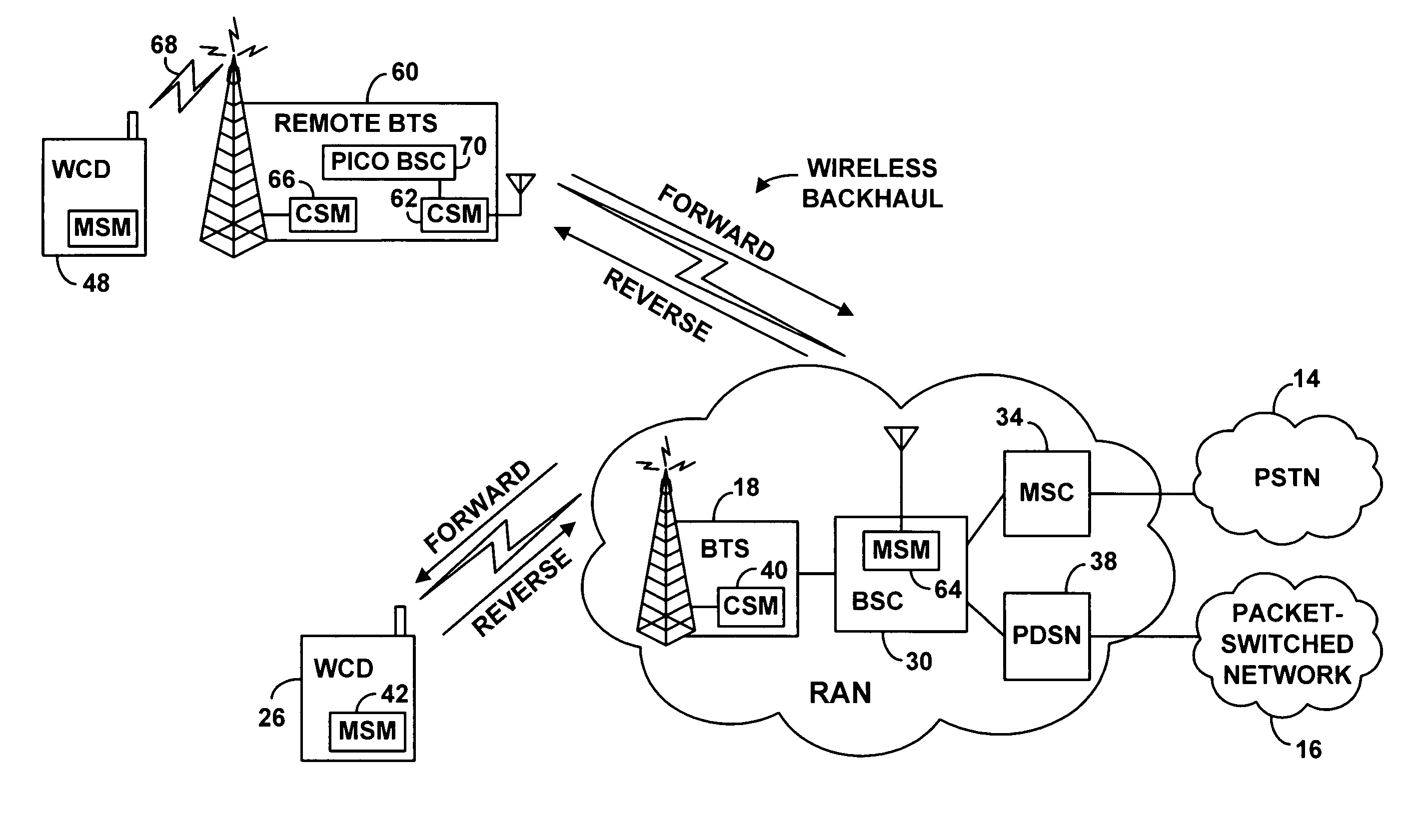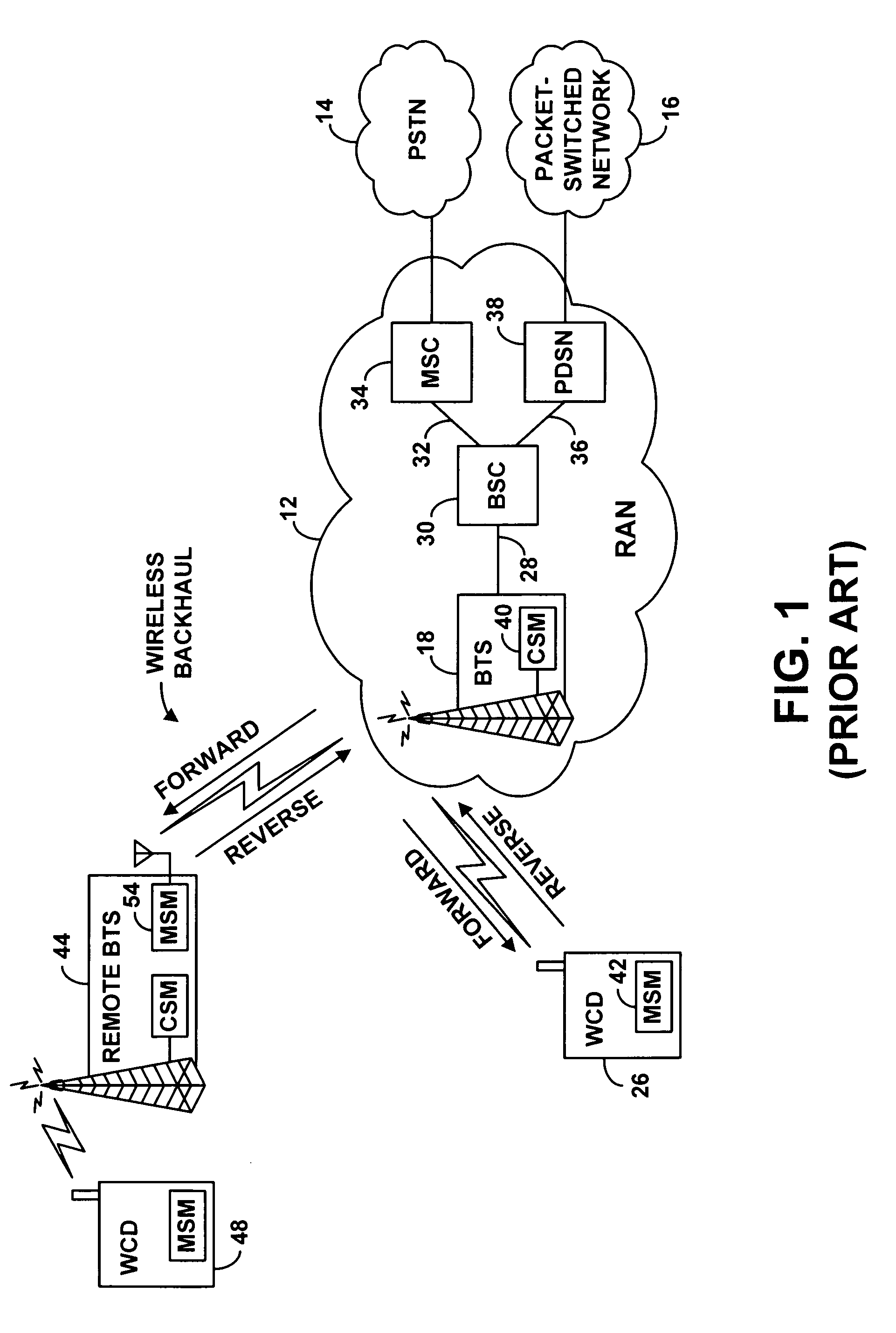Method and system for wireless backhaul communication between a radio access network and a remote base station
a radio access network and remote base station technology, applied in the field of wireless backhaul communication between a radio access network and a remote base station, can solve the problems of not being able to fully or satisfactorily complete the backhaul connection of such a landline, and the cost of running such a landline connection is high,
- Summary
- Abstract
- Description
- Claims
- Application Information
AI Technical Summary
Benefits of technology
Problems solved by technology
Method used
Image
Examples
Embodiment Construction
[0022]Referring to the drawings, FIG. 1 is a block diagram depicting a prior art wireless communication system. As shown, the system includes at its core a radio access network (RAN) 12, which functions to provide connectivity between wireless client devices and one or more transport networks, such as the PSTN 14 and a packet-switched network (e.g., the Internet, or a private packet network) 16. RAN 12 conventionally includes a BTS 18 (including BTS antenna tower and BTS radio equipment), which radiates to define an air interface 24 through which the BTS communicates with wireless client devices. One wireless client device (WCD) (e.g., a cell phone, PDA, or other wirelessly-equipped device) 26 is shown by way of example; others could be provided as well.
[0023]As further shown, BTS 18 is coupled by a link 28 with a BSC 30 (also known in some implementations as a “radio network controller” (RNC)), which functions to control aspects of the BTS 18 as well as aspects of communication ove...
PUM
 Login to View More
Login to View More Abstract
Description
Claims
Application Information
 Login to View More
Login to View More - R&D
- Intellectual Property
- Life Sciences
- Materials
- Tech Scout
- Unparalleled Data Quality
- Higher Quality Content
- 60% Fewer Hallucinations
Browse by: Latest US Patents, China's latest patents, Technical Efficacy Thesaurus, Application Domain, Technology Topic, Popular Technical Reports.
© 2025 PatSnap. All rights reserved.Legal|Privacy policy|Modern Slavery Act Transparency Statement|Sitemap|About US| Contact US: help@patsnap.com



